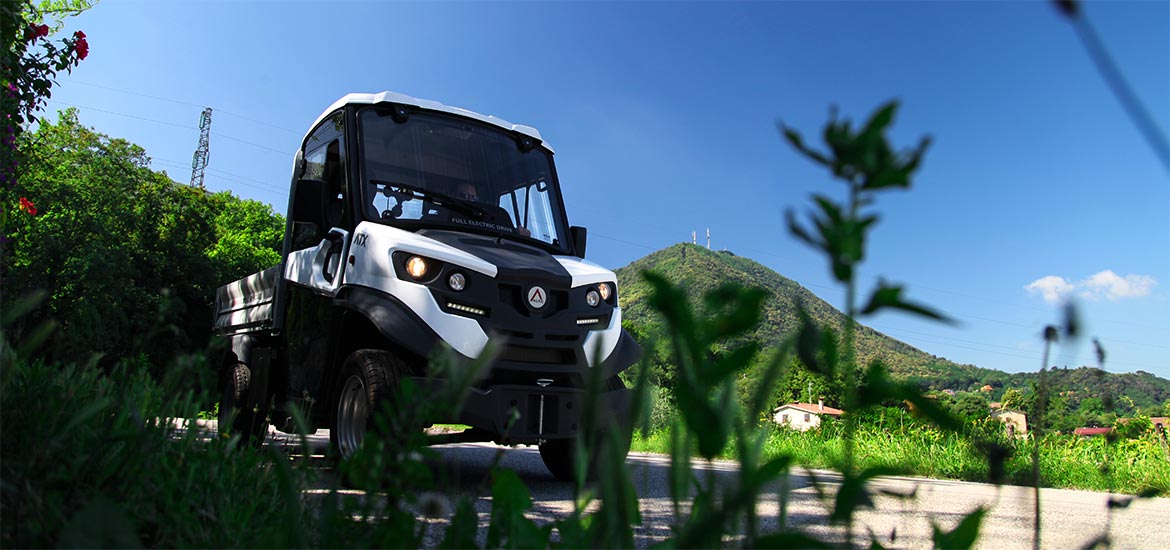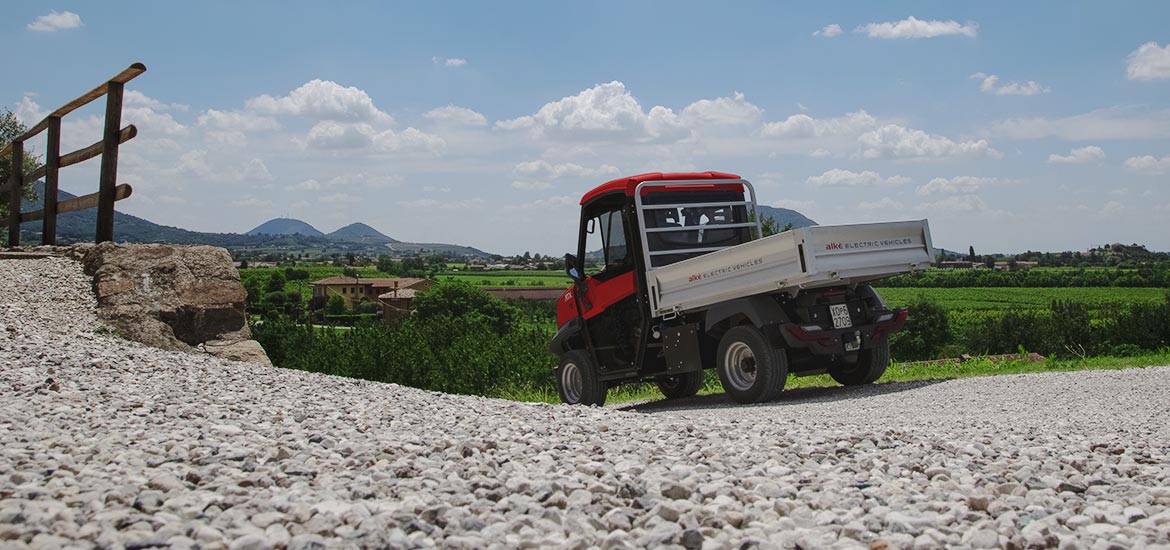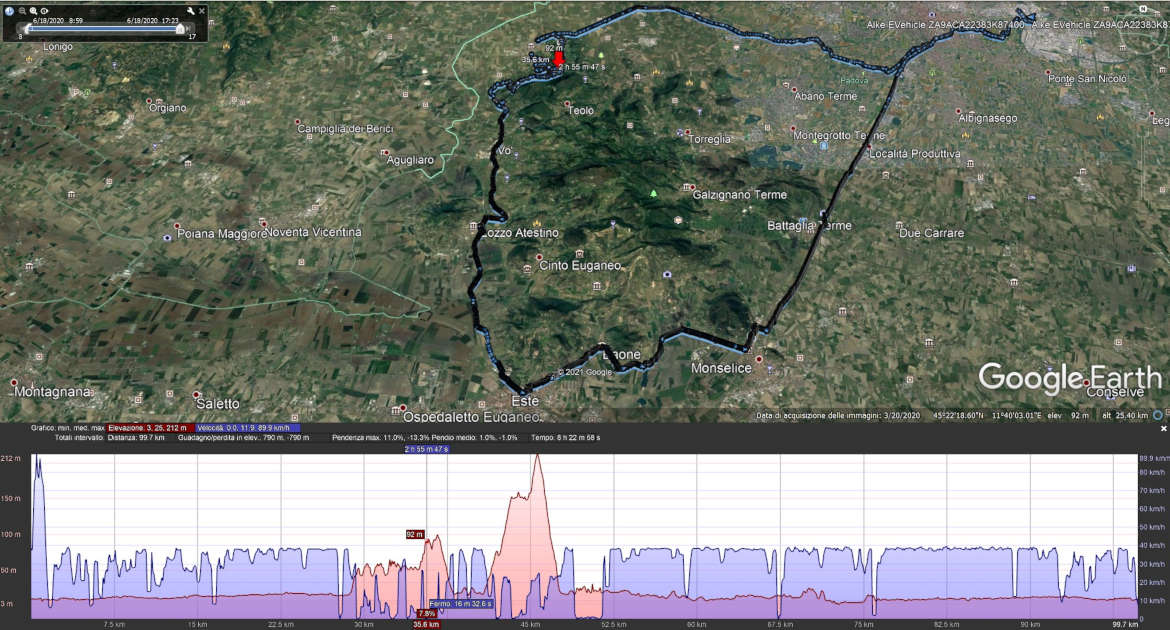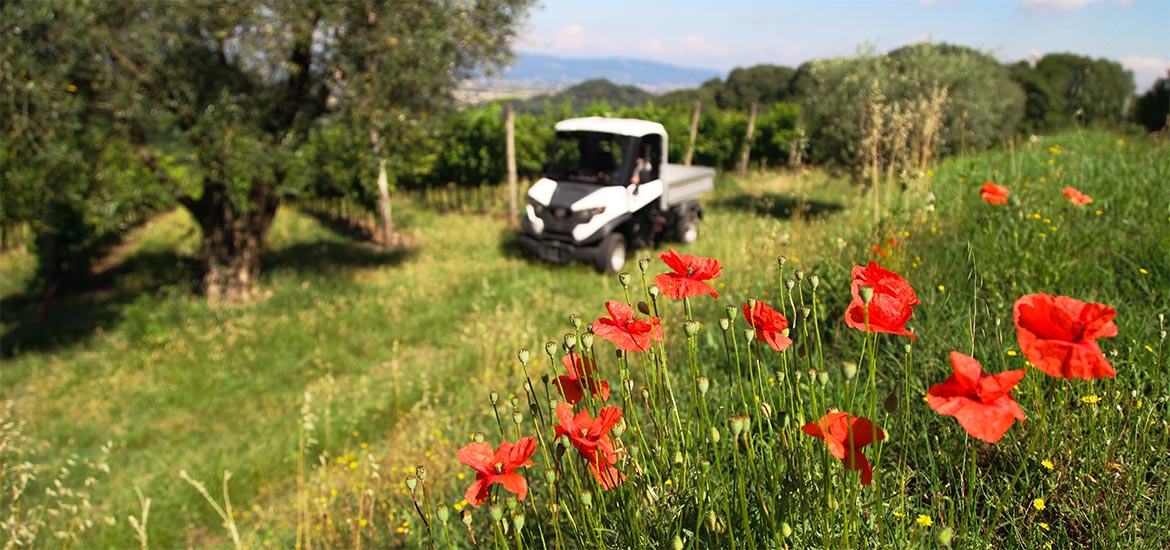
Alkè Electric Vehicles: better than Electric ATV
We have repeatedly demonstrated the high performance of Alkè electric vehicles even in the most extreme situations. But would you have ever thought that they could outperform traditional ATVs? Let's find out what the Alke vehicles have to offer.
Why Alke' electric vehicles are better than ATVs
- Load capacity up to 1.630 kg (chassis)
- Towing capacity up to 4.500 kg
- Possibility of transporting more than 2 passengers
- Type approved for road circulation (N1 category)

Alke' electric vehicles - What they offer more than traditional ATVs
Alkè electric vehicles are fully electric, so they do not pollute and are silent. Compared to ATVs they are extremely versatile, in fact they can be used for multiple activities. Transport, towing and maintenance among the main ones. Alke' vehicles can also carry more than 2 passengers. This can be useful if you need to transport a work team or guests. For example, in wildlife parks or mountain resorts. Unlike ATVs these vehicles can be used for cargo management activities. With a load capacity of up to 1630 kg and a towing capacity of up to 4500 kg.

Electric vehicles - Mountain test
We have carried out a test with an electric vehicle in the mountains to show that these electric vehicles can have a performance comparable to ATVs, with something extra. This test was carried out with the model ATX 340E with a 20 kWh lithium battery. A total of 112 km was travelled, with elevation gain of 600 m and a maximum height of 212 m reached. At the end of the test, the battery was at around 30% of its capacity. The vehicle was equipped with the Vehicle Body Computer (VBC) to keep a complete record of all parameters. The journey covered a tarmac and partly off-road ground with frequent stop-and-go driving. This, along with the downhills, allowed the drivers to be able to see all the parameters. This, together with the descents, made it possible to make significant use of regenerative braking and to arrive at the end of the test with battery with an availability of around 30%. The energy reserve in electric vehicles can also rise, unlike carburettors.

Driving on slopes with electric vehicles
The test of the ATX 340E was carried out on narrow and rough roads with hairpin bends and difficult curves, even uphill. Thanks to the AC 48V asynchronous induction motor, the Alke electric vehicles are able to cope with gradients of up to 35%. Their compactness makes it easy for them to be very agile on mountain roads. The Alke' utility vehicles adopt technical solutions derived from the off-road and industrial sectors, and for this reason they are able to easily face even off-road routes. Alkè vehicles can also be driven without problems in snow or ice. When using an electric vehicle in the mountains, carefully consider whether to recharge it before returning. In most cases it is not necessary. Starting off with a fully charged battery will not allow you to make the most of the energy recovery when descending.

